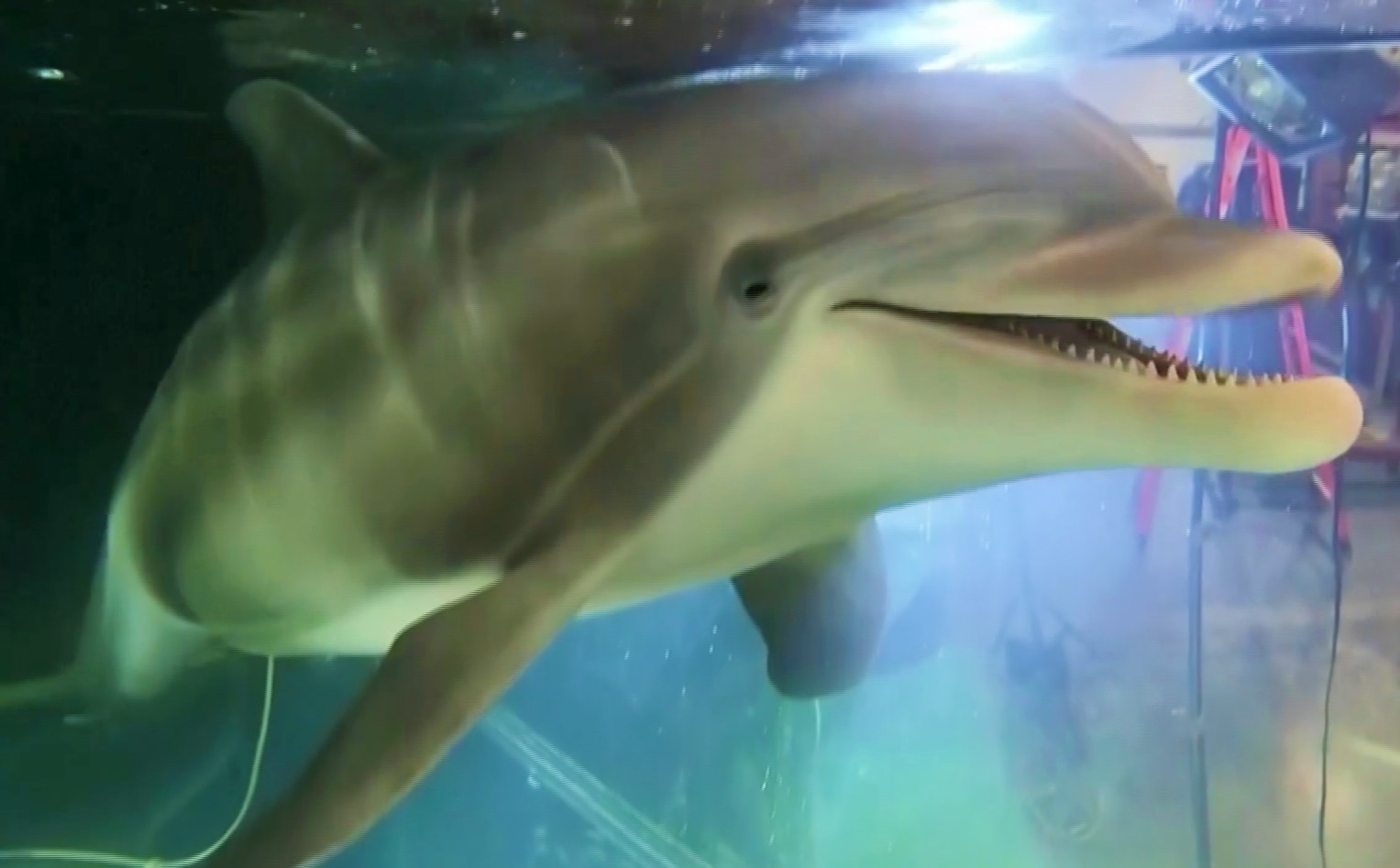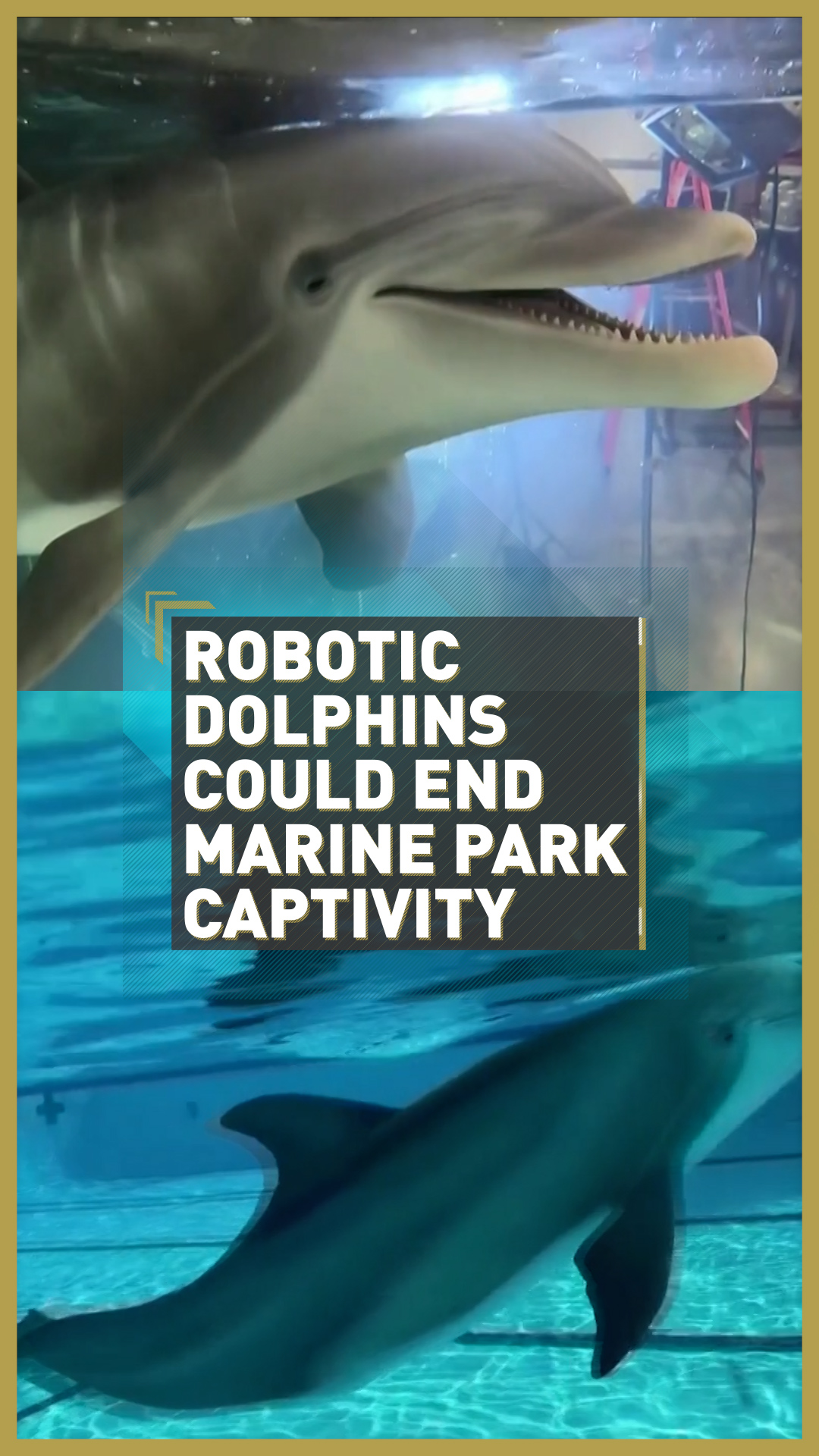A robotic dolphin made by animatronics specialists behind the 1990s Hollywood blockbuster Free Willy could help end marine park captivity for good.
The playful mechanical mammal designed by Edge Innovations can nod, swim in aquariums and withstand close contact with humans. According to its developers, it is almost identical to a living animal.
The big difference? Aside from its robotic wiring, this dolphin may offer marine parks a cruelty-free alternative to keeping live animals, potentially turning an often vilified industry on its head.

Changing hearts and minds
Over the past three decades, animal lovers have become progressively more conscious of the negative impact of keeping intelligent animals at marine parks.
This is in part thanks to documentaries such at the 2013 film Blackfish, which exposed the controversial living conditions of Tilikum, an orca at the U.S. marine park SeaWorld that was involved in the deaths of three people.
In the movie’s wake, countries such as Canada have gone so far as to effectively ban whale and dolphin captivity because of the intense stress it is thought to put on aquatic mammals.
But until now, there hadn’t been a viable alternative to the highly profitable industry.
“It’s surprising there are 3,000 dolphins currently in captivity to generate several billion dollars just for dolphin experiences,” said Walt Conti, the founder and CEO of the company behind the robot.
“There’s obviously an appetite to love and learn about dolphins and so we want to use that appetite and offer different ways to fall in love with the dolphin.”
The response from Edge Innovations has been to replace capturing, breeding, and training the animals by creating a robotic replacement.
Watch: Meet the robot dog that could replace humans

The 250-kilo robotic dolphin has skin made of medical grade silicone. /Edge Innovations/Reuters
The 250-kilo robotic dolphin has skin made of medical grade silicone. /Edge Innovations/Reuters
Reality vs replicants
Their 250 kilogram mechanical mammal has medical grade silicone skin and was made with the help of marine biologists, who used the physiology of real dolphins to help replicate the animals’ movements.
“Everyone wants to know if using an animatronic dolphin is different from using a real dolphin,” said the company’s creative director, Roger Holzberg. “The truth is in many ways they’re the same.”
He added: “If you want to design a show that uses real dolphins, you have to capture real dolphins, train them and get them to do that show.
“With creating robots you have to do exactly the same thing – the difference is you don’t have to have breeding programs, worry about safety with human beings.”
The robotic dolphin’s creators say it’s similar to a real dolphin in that they’re both trained to do a show. /Edge Innovations/Reuters
The robotic dolphin’s creators say it’s similar to a real dolphin in that they’re both trained to do a show. /Edge Innovations/Reuters
The U.S. company has been a Hollywood go-to since the 1990s, and masterminded the robotic animals seen in the oceanic hits Deep Blue Sea and The Abyss.
However, as film studios increasingly turn to computer-generated images for their on-screen animals, the animatronics specialists have shifted focus to employing their designs at theme parks.
Whether audiences will take to the mechanical models is another question, but the company has already found homes for the robot dolphins in marine parks being built in China.
However, the dolphins don’t come cheap. They have a price tag of around $3 million to $5 million each, a potential obstacle to them becoming a cost-effective alternative for marine parks.
But the developers are hopeful their design will make a change. “The idea of this pilot is really to create a Sesame Street underwater,” said Holzberg.
“Those characters taught a generation how to feel about different kinds of aspects of humankind in ways that hadn’t been imagined before. And that’s what we dream of with this project.”
Source(s): Reuters
